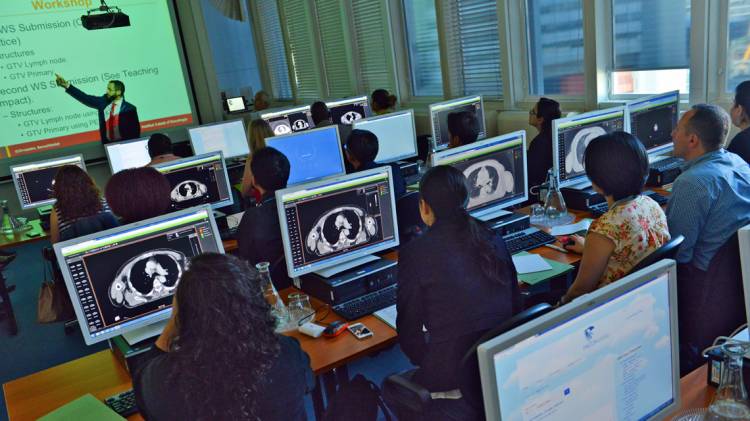Tanzanian doctors are now able to deliver more precise radiation treatment for cancer patients with less damage to healthy tissue. Following training and support from the IAEA in 3D radiotherapy planning, patients will have access to more effective and safer cancer care.
“Being as accurate as possible when irradiating a tumour is essential. We now have the skills to more fully understand the extent of a tumour and ultimately plan better and more precise treatment for our patients,” said Mark Mseti, a radiation oncologist at the Ocean Road Cancer Institute in the capital Dar es Salaam, which receives technical support and equipment through the IAEA. He participated in a recent IAEA training on 3D planning for target volume definition and contouring for radiotherapy (see Target volume definition and contouring for radiotherapy planning). This is part of Tanzania’s shift from 2D to 3D radiotherapy planning services that will be implemented in the future after the opening of the country’s first facility equipped with 3D planning tools.
“The concept of target volume definition and contouring is about making sure that the radiation we use is focusing on the disease and not on healthy tissue,” explained Mseti. “If you can obtain accuracy in drawing, or contouring, the tumour, you will have a higher probability of targeting and obtaining the goals of treatment, while sparing as much of the healthy, normal tissues as you can.”
Cancer is the uncontrolled division of abnormal cells in the body, and radiation can be used to stop that division. Specific doses of radiation can damage cells beyond repair, causing them to stop dividing and die. This makes radiation effective for managing and treating cancer. However, if the radiation is imprecisely or improperly targeted or delivered at the wrong dose level, the patient’s healthy cells can be unnecessarily damaged, or the cancer cells may only be partially eliminated, leaving other cancer cells to continue dividing. This could put the patient at risk of health complications in the short or long term.
The IAEA supports its Member States, like Tanzania, in working to reduce the burden of non-communicable diseases like cancer. To this end, the IAEA offers training, coordinates research, provides equipment and technical expertise and hosts scientific fellows, among other services. Like Tanzania, many low and middle income countries are only beginning or planning to begin using 3D cancer treatment tools.
Being as accurate as possible when irradiating a tumour is essential. We now have the skills to more fully understand the extent of a tumour and ultimately plan better and more precise treatment for our patients.






